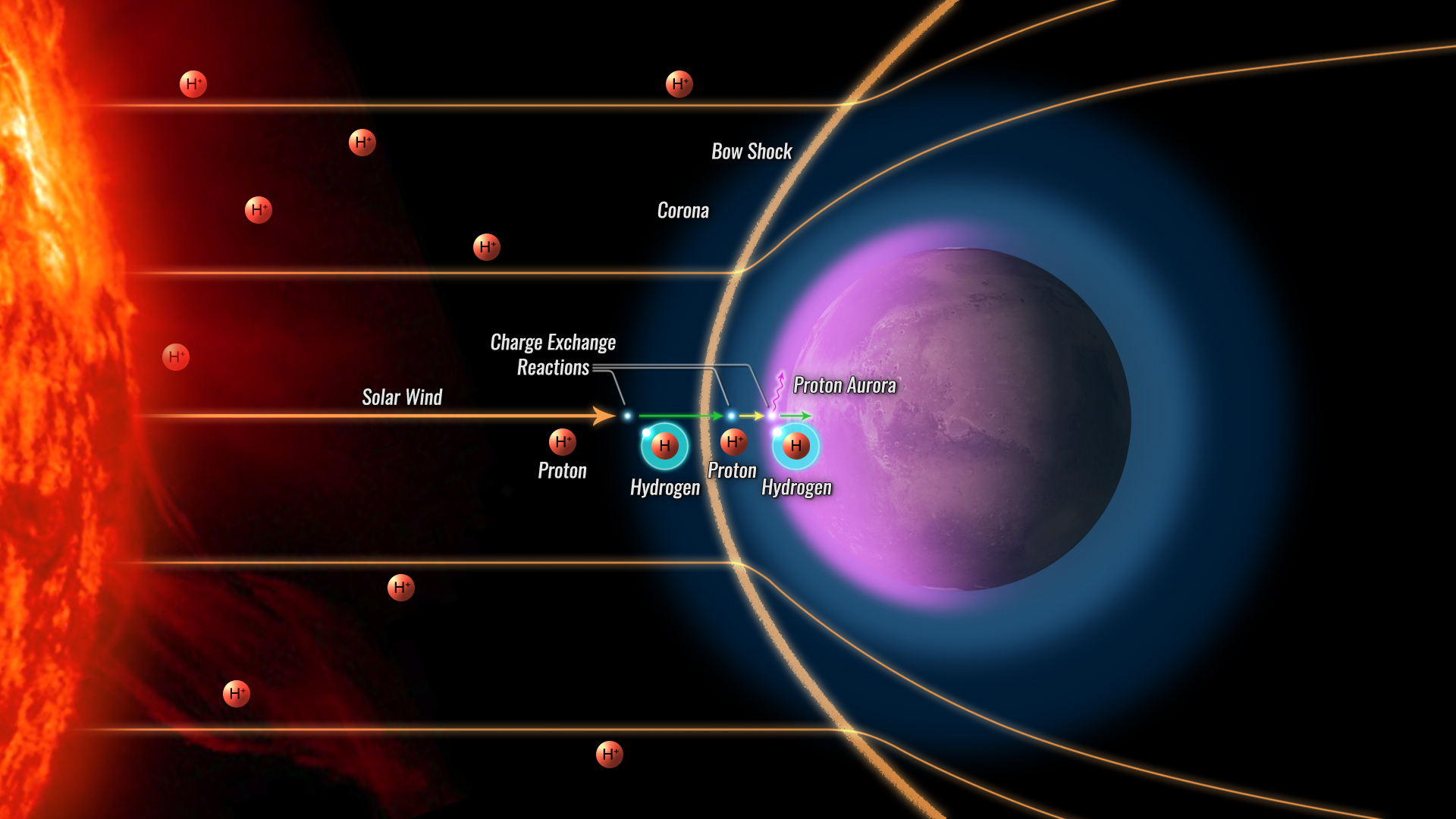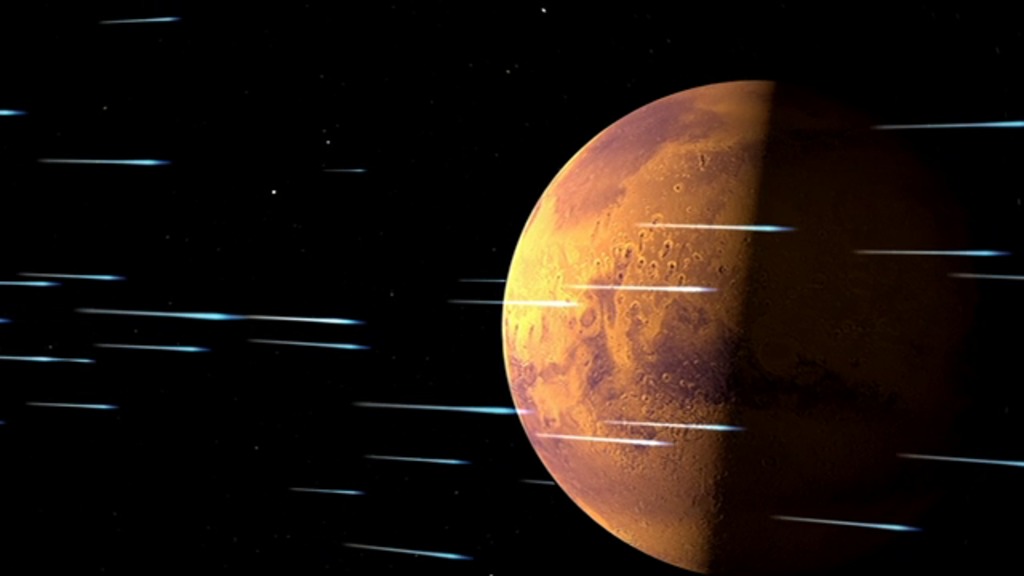Ultraviolet Mars Reveals Cloud Formation
Ultraviolet images from NASA's Mars Atmosphere and Volatile Evolution mission, MAVEN, were used to make this movie of rapid cloud formation on Mars.
Watch this video on the NASA.gov Video YouTube channel.
Images from MAVEN's Imaging UltraViolet Spectrograph were used to make this movie of rapid cloud formation on Mars on July 9-10, 2016. The ultraviolet colors of the planet have been rendered in false color, to show what we would see with ultraviolet-sensitive eyes. The movie uses four MAVEN images to show about 7 hours of Mars rotation during this period, and interleaves simulated views that would be seen between the four images. Mars' day is similar to Earth’s, so the movie shows just over a quarter day. The left part of the planet is in morning and the right side in afternoon. Mars’ prominent volcanoes, topped with white clouds, can be seen moving across the disk. Mars’ tallest volcano, Olympus Mons, appears as a prominent dark region near the top of the images, with a small white cloud at the summit that grows during the day. Olympus Mons appears dark because the volcano rises up above much of the hazy atmosphere which makes the rest of the planet appear lighter. Three more volcanoes appear in a diagonal row, with their cloud cover merging to span up to a thousand miles by the end of the day. These images are particularly interesting because they show how rapidly and extensively the clouds topping the volcanoes form in the afternoon. Similar processes occur at Earth, with the flow of winds over mountains creating clouds. Afternoon cloud formation is a common occurrence in the American West, especially during the summer.
For More Information
See NASA.gov
Credits
Please give credit for this item to:
NASA GSFC/MAVEN/University of Colorado
-
Principal investigator
- Bruce Jakosky (LASP)
-
Scientist
- Nick Schneider (LASP)
-
Project support
- Dan Gallagher (USRA)
-
Technical support
- Aaron E. Lepsch (ADNET Systems, Inc.)
Release date
This page was originally published on Monday, October 17, 2016.
This page was last updated on Thursday, November 9, 2023 at 12:29 PM EST.



